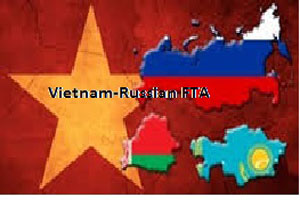
Vietnam unlikely to get much benefit from Russian FTA
YarnsandFibers News Bureau 2015-01-29 13:00:00 – VietnamThe final negotiation between Vietnam and the Customs Union of Russia, Belarus and Kazakhstan on their free trade agreement (FTA) concluded last month is expected to sign the agreement early this year granting Vietnam preferential export tariffs on textiles and garments, agricultural produce, seafood, footwear and furniture. With the effect of FTA, many of those products are expected to enjoy zero-percent tariffs.
According to Nguyen Binh Giang of the Export-Import Department of the Ministry of Industry and Trade, many of Russia's standards are even higher than those imposed by the EU.
Moreover, the devaluation of the ruble against the dollar and euro is becoming a challenge for local exporters, since it raised the price of Vietnamese products shipped to Russia. The country will likely reduce imports from foreign countries to decrease spending.
Economist Nguyen Van Nam remains skeptical about the benefits the agreements will bring, describing the situation as something of a stacked deck.
Future FTAs are unlikely to be of much benefit due to non-tariff barriers that Vietnamese enterprises find it hard to overcome. Technical barriers, including criteria on product quality, safety, and intellectual property protection, could limit their exports.
If enterprises do not meet the requirements, Vietnam will fail to increase exports to the market despite the tax cuts. It is very difficult for local firms, given their limited financial capacity and poor production technology, to overcome the barriers.
Late last year, Vietnam and South Korea signed a statement that concluded their negotiations of an FTA. Vietnam also expects to finalize negotiations for the EU-Vietnam Free Trade Agreement and the Trans-Pacific Partnership (TPP) this year. Economist Nguyen Van Nam expects this same problem will arise in relation to the TPP.
The garment sector, Vietnam's key exporter, hopes to enjoy great benefits from the country's participation in the TPP as tariffs on local garment exports to the United States could be reduced to zero percent from the current average of 17.2 percent after the agreement comes into effect.
To penetrate the US market further under the TPP's preferential tariffs, local products would also need to meet requirements on material origins. Most of the materials used in Vietnam's garment production are imported from non-TPP members, mainly China, so it would be very difficult for local garment exporters to meet the requirements for tariff cuts, said Le Tien Truong, vice chairman of the Vietnam Garment and Textile Group.
Vietnam has the capacity to produce some 500,000-600,000 tons of textiles annually, but much of that output is of such poor quality that it falls short of export requirements. They will not be able to make use of the opportunities if they don't speed up their restructuring to become more competitive. They are likely to fail to compete with foreign competitors pouring into the local market.
The agreements place huge pressure on local enterprises to reform.
Market Intelligence
Ask for free sample Report

experience
Customer Base
dedicated team
Countries Served Worldwide









